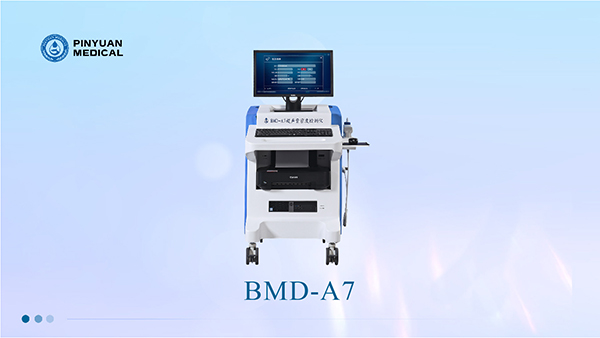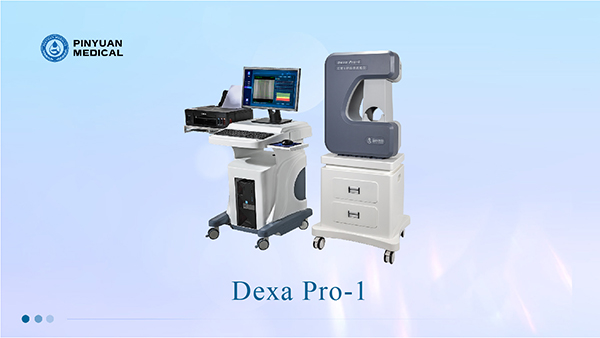Can children still grow taller?
Do you feel that your bones are not as good as before after pregnancy?
When you are old, your bones become fragile and break when you fall?
Behind these questions
All of these problems are closely related to a key indicator - bone density.
Bone density is simply the amount of minerals in the bones, which directly reflects the strength and health of the bones. As we grow older, our bones go through an "aging" process, bone density gradually decreases, and bones become brittle, which is the root cause of osteoporosis.
The importance of bone densitometry can be seen in the fact that it helps us to understand the strength of our bones and predicts the risk of fracture.
Bone densitometers can be categorized into two main types: ultrasound bone densitometers and dual-energy X-ray bone densitometers.
Ultrasound bone densitometer is a medical device that uses ultrasound technology to perform non-invasive examination of human bones (tibia/radius, etc.). It has the advantage of no risk of radiation, is suitable for initial screening, and is especially suitable for individuals who need to monitor their bone status on a regular basis, and is widely used in healthcare institutions, medical checkup centers, and other places.
Dual-energy X-ray bone densitometer, which calculates bone mineral density values by measuring the degree of absorption of X-rays by the bone to determine the presence of osteoporosis. The accuracy of this method is high, and it is the "gold standard" for bone density testing, which is widely recognized and used by the International Health Organization.
BMD-A7 ultrasonic bone densitometer has the technical advantages of multi-site measurement (radius, tibia) and multi-sensor probes, which can realize the comprehensive detection of different age groups. Its built-in database of children and teenagers (0-12 years old), adolescents (12-20 years old), adults (20-80 years old), and the elderly (80-100 years old) makes the test results more in line with the actual situation of different people. In addition, the device can also provide a number of testing indicators including ultrasound sound velocity, T-value, Z-value, bone quality index, adult ratio, peer ratio, bone age, fracture risk index, expected osteoporosis, BMI index, etc., which can provide doctors with a comprehensive basis for bone health assessment.

Dexa Pro-1 Dual Energy X-Ray Bone Densitometer adopts dual-energy X-Ray absorption measurement method, based on the special analysis system for NPC data and unique triple positioning technology, laser positioning, wrist positioning and palm positioning, which makes the measurement position more accurate. The patented forearm shield design effectively shields the rays and fully protects the safety of medical personnel and the person being measured. Positioning window is specially designed at the operation end, which is convenient for the operator to observe the position status and make timely adjustments to ensure the measurement results.

Ultrasonic bone densitometer and dual-energy X-ray bone densitometer have their own advantages and application scenarios. When choosing a bone densitometer, you should make a reasonable choice according to your individual situation and doctor's advice in order to assess and monitor your bone health.
Post time: Aug-08-2024
